
Around two years back, I put up a list of those favourites of the mixing class, the white rums, and listed 21 examples I considered memorable up to that point. Back then, I contended that they might or might not be aged, but for pungency, strength, uniqueness and sheer enjoyment, they were an emerging trend that we should pay attention to. And indeed, happily, in the time since then, we have seen quite a few new and interesting variations for sale, not least among the new micro distilleries that keep popping up. They must be thanking their lucky stars for this strong undercurrent of appreciation, because it allows unaged rums right off the still to be available for sale immediately – and be wanted! – rather than have to try to break into the mixing market with some kind of ersatz Bacardi knockoff in an effort to make cash flow
For the most part, I ignore bland mixing rums in my reviews, but that’s not because they’re bad, per se. After all, they serve their purpose of providing an alcoholic jolt without question…just without fanfare or style, or uniqueness of any kind. They are, to me, plain boring – complete yawn-throughs. In point of fact, providing alcohol is just about all they do, and like a chameleon, they take up the taste of whatever else is chucked into the glass. That’s their raison d’etre, and it would be incorrect to say they’re crap rums just for toeing the line of their creators.
Still: my own rather peculiar tasting desire is different, since I’m not a tiki enthusiast or a boozehound. When it comes to whites, I’m a screaming masochist: I want snarling growling bastards, I want challenge, I want a smackdown of epic proportions, I want to check out that reeking dutty-stink-bukta over there that may be disgustingly strong, may have the foul stench of Mr. Olympia-level strength, may reek of esters and might pour undiluted sulphur and hogo and rancio and God only knows what else all over my schnozzola and my palate. It’s perfectly all right to hate ‘em…but by God, I won’t be bored, because like those big-’n’-bad porknockers and bushmen I used to work with in my youth, while they might garb themselves in a glorious lack of sophistication, they’re honest and they’re strong and they’re badass, and they’ll give you the shirt off their backs without hesitation.
Not all rums listed below necessarily conform to those admittedly off-kilter personal standards of mine. And sure, you might hate one or more (or all), and very likely have favoured candidates of your own which you’ll berate me for not listing. Let’s just say that they’re all worth trying, some maybe only the one time, others quite a bit more. If you have not dipped your toes in here yet, then I hope you get to enjoy them, one day, as much as I did when I first got assaulted by their sometimes-rabid charms.
 Martinique – Saint James pot still white rum (60%). Surely this has been one of the most interesting rums of any kind (not just a white) of recent times, even though it’s been in production for many years. Largely this is because most of the Martinique whites we try are from column stills – this one is from a pot still, takes no prisoners and is pungent, beefy and an all-round massive piece of work for a cocktail, or for the brave to sip neat.
Martinique – Saint James pot still white rum (60%). Surely this has been one of the most interesting rums of any kind (not just a white) of recent times, even though it’s been in production for many years. Largely this is because most of the Martinique whites we try are from column stills – this one is from a pot still, takes no prisoners and is pungent, beefy and an all-round massive piece of work for a cocktail, or for the brave to sip neat.
 Guyana – El Dorado 3 Year Old white rum (40%). While it’s an oldie that is more of a standard rum than a real exciting new one, it remains a mid-tier favourite with good reason – because it derives from a blend of the wooden stills’ output, and even if it is filtered after ageing to make it colourless, even if it’s a “mere” living room strength, much of the elemental power of the stills still bleeds through. And that makes it a rumlet for a lesser god, so to speak.
Guyana – El Dorado 3 Year Old white rum (40%). While it’s an oldie that is more of a standard rum than a real exciting new one, it remains a mid-tier favourite with good reason – because it derives from a blend of the wooden stills’ output, and even if it is filtered after ageing to make it colourless, even if it’s a “mere” living room strength, much of the elemental power of the stills still bleeds through. And that makes it a rumlet for a lesser god, so to speak.
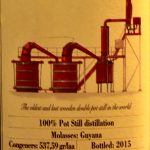 Guyana-Italy. And yes, the Habitation Velier Port Mourant unaged white rum (59%) must come in for mention right alongside its softer cousin from DDL. What a steaming, ferocious, tasty white this is. Salty, waxy, fruity, with anise and complexity to spare, it’s a wordless masterclass in appreciating the wooden stills, trapped in a single bottle. Velier sure raised the bar when it devoted a whole series of their HV rums to the blanc side.
Guyana-Italy. And yes, the Habitation Velier Port Mourant unaged white rum (59%) must come in for mention right alongside its softer cousin from DDL. What a steaming, ferocious, tasty white this is. Salty, waxy, fruity, with anise and complexity to spare, it’s a wordless masterclass in appreciating the wooden stills, trapped in a single bottle. Velier sure raised the bar when it devoted a whole series of their HV rums to the blanc side.
 Thailand – Issan (40%). A contrast to the HV-PM above is difficult to imagine. Issan is a soft, mild, not too fierce sundowner. Its charms are in ease and languor, not in some kind of rabid attack on your face like Velier prefers. Even with that though, it showed great potential, a serious set of tastes, and if one walks in expecting little but a sweetened almost-liqueur, one is in for a welcome surprise. If it ever goes higher than 40%, it’ll be an even better deal.
Thailand – Issan (40%). A contrast to the HV-PM above is difficult to imagine. Issan is a soft, mild, not too fierce sundowner. Its charms are in ease and languor, not in some kind of rabid attack on your face like Velier prefers. Even with that though, it showed great potential, a serious set of tastes, and if one walks in expecting little but a sweetened almost-liqueur, one is in for a welcome surprise. If it ever goes higher than 40%, it’ll be an even better deal.
 Guadeloupe – Longueteau Rhum Blanc Agricole 62°. If it had not been for Neisson’s L’Esprit 70%, or L’Esprit’s 85% mastodon of the Diamond, this might have had bragging rights for power, since most whites are 48-58% ABV and shine at that strength. This one aimed higher, dared more and is a complete riot to have by itself, adhering to much of what we love about the unaged agricoles – the grassy, herbal, fruity notes, mixed in with a little pine-sol and a whole lot of attitude.
Guadeloupe – Longueteau Rhum Blanc Agricole 62°. If it had not been for Neisson’s L’Esprit 70%, or L’Esprit’s 85% mastodon of the Diamond, this might have had bragging rights for power, since most whites are 48-58% ABV and shine at that strength. This one aimed higher, dared more and is a complete riot to have by itself, adhering to much of what we love about the unaged agricoles – the grassy, herbal, fruity notes, mixed in with a little pine-sol and a whole lot of attitude.
 Mexico – ParanubesWhite Rum (54%). This is the closest to a clairin I’ve tried that isn’t from Haiti, and it possesses a glute-flexing character and Quasimodo-addled body second to none. Unless you’re into clairins and mescals, please use caution when trying it; and if you can’t, don’t send me flaming emails about how the salt, wax, wet ashes, gherkins, and chilis created a melange of shockingly rude baddassery that nearly collapsed your knees, stuttered your heart and loosened your sphincter. It’s as close to a complete original as I’ve tried in ages.
Mexico – ParanubesWhite Rum (54%). This is the closest to a clairin I’ve tried that isn’t from Haiti, and it possesses a glute-flexing character and Quasimodo-addled body second to none. Unless you’re into clairins and mescals, please use caution when trying it; and if you can’t, don’t send me flaming emails about how the salt, wax, wet ashes, gherkins, and chilis created a melange of shockingly rude baddassery that nearly collapsed your knees, stuttered your heart and loosened your sphincter. It’s as close to a complete original as I’ve tried in ages.
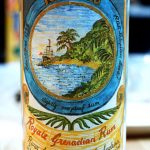 Grenada – Rivers Royale White Overproof. Retasting this 69% hard-charger was like rediscovering ancient whites, pure whites, pirate-grog-level whites, made in traditional ways. It’s still not available for sale outside Granada, and I may have been premature naming it a Key Rum of the World. But if you can, taste it — just taste it — and tell me this is not one of the most amazing unaged clear rums you’ve ever had, melding sweet and salt and fruit and soup and a ton of other stuff I have no names for. It’s a pale popskull nobody knows enough about, and that alone is reason to seek it out of you can. There’s a stronger version that never makes it off the island even in traveller’s suitcases
Grenada – Rivers Royale White Overproof. Retasting this 69% hard-charger was like rediscovering ancient whites, pure whites, pirate-grog-level whites, made in traditional ways. It’s still not available for sale outside Granada, and I may have been premature naming it a Key Rum of the World. But if you can, taste it — just taste it — and tell me this is not one of the most amazing unaged clear rums you’ve ever had, melding sweet and salt and fruit and soup and a ton of other stuff I have no names for. It’s a pale popskull nobody knows enough about, and that alone is reason to seek it out of you can. There’s a stronger version that never makes it off the island even in traveller’s suitcases
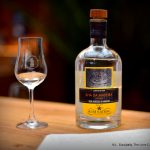 Madeira-Italy – Rum Nation Ilha da Madeira (50%). Madeira rums can use the “agricole” moniker and they do, but alas, are still not widely known, and therefore it’s up to the indies to raise their profile in the interim. One of the first was Rum Nation’s 50% white from Engenho, which walked a fine line between “Z-z-z-z” and “WTF?” and came up with something both standard and queerly original. If it had a star sign, my guess would be would be Gemini. (Note: this entry is a re-taste because it was also on the first 2017 list and I had subsequently checked it out again).
Madeira-Italy – Rum Nation Ilha da Madeira (50%). Madeira rums can use the “agricole” moniker and they do, but alas, are still not widely known, and therefore it’s up to the indies to raise their profile in the interim. One of the first was Rum Nation’s 50% white from Engenho, which walked a fine line between “Z-z-z-z” and “WTF?” and came up with something both standard and queerly original. If it had a star sign, my guess would be would be Gemini. (Note: this entry is a re-taste because it was also on the first 2017 list and I had subsequently checked it out again).
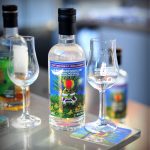 Madeira-UK – Boutique-y Reizinho White Agricole (49.7%). The Boutique-y boys’ Reizinho comes from another indie, freshly minted and given lots of visibility by its enormously likeable rep, Pete Holland of Ye Olde Rum Shack (rumour has it that whenever brings his beautiful wife and cute-as-a-button daughter to a fest, sales jump 50% immediately); they chose well with their first such rum, and one of their selections became a standout of the whites in Paris 2019. This one
Madeira-UK – Boutique-y Reizinho White Agricole (49.7%). The Boutique-y boys’ Reizinho comes from another indie, freshly minted and given lots of visibility by its enormously likeable rep, Pete Holland of Ye Olde Rum Shack (rumour has it that whenever brings his beautiful wife and cute-as-a-button daughter to a fest, sales jump 50% immediately); they chose well with their first such rum, and one of their selections became a standout of the whites in Paris 2019. This one
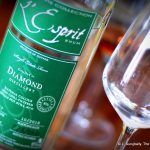 Guyana-France – L’Esprit White Collection “PM” (85%). One of the most powerful rums ever unleashed (no other word will do) on defenseless rum drinkers, not quite eclipsing the HV PM above, but coming close and serving as another indicator that the wooden heritage stills at Diamond preserve their amazing taste profiles even when fresh off the stills. 85% ABV, and it means business, with licorice, caramel, vanilla, dark fruits and God only knows what else bursting out of every pore. I call mine “Shaft”.
Guyana-France – L’Esprit White Collection “PM” (85%). One of the most powerful rums ever unleashed (no other word will do) on defenseless rum drinkers, not quite eclipsing the HV PM above, but coming close and serving as another indicator that the wooden heritage stills at Diamond preserve their amazing taste profiles even when fresh off the stills. 85% ABV, and it means business, with licorice, caramel, vanilla, dark fruits and God only knows what else bursting out of every pore. I call mine “Shaft”.
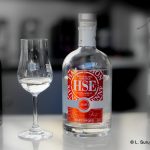 Martinique – HSE Rhum Blanc Agricole 2016 (Parecellaire #1)(55%). I would not pretend that I can pick out the difference between various parcels of land which make up such atomized micro-productions. Who cares, though? The rum is good with or without such details – it’s sweet, fragrant, fruity and has some old sweat-stained leather shoes ready to kick ass and take names. Tons of flavour and complexity, oodles of enjoyment.
Martinique – HSE Rhum Blanc Agricole 2016 (Parecellaire #1)(55%). I would not pretend that I can pick out the difference between various parcels of land which make up such atomized micro-productions. Who cares, though? The rum is good with or without such details – it’s sweet, fragrant, fruity and has some old sweat-stained leather shoes ready to kick ass and take names. Tons of flavour and complexity, oodles of enjoyment.
 Reunion-Italy – Habitation Velier HERR. Merde I liked this. 62.5% of pure double distilled pot-still Harley-riding, jacket-sporting, leather-clad bad boy from the High Ester Still. So flavourful and yet it loses nothing of its cane juice origins. Unaged, unmessed-with, bottled in 2017 and a serious rum from any angle, at any time, for any purpose. Savanna’s decision not to do away with the still that made this, back when they were modernizing, was a masterstroke. We should all be grateful.
Reunion-Italy – Habitation Velier HERR. Merde I liked this. 62.5% of pure double distilled pot-still Harley-riding, jacket-sporting, leather-clad bad boy from the High Ester Still. So flavourful and yet it loses nothing of its cane juice origins. Unaged, unmessed-with, bottled in 2017 and a serious rum from any angle, at any time, for any purpose. Savanna’s decision not to do away with the still that made this, back when they were modernizing, was a masterstroke. We should all be grateful.
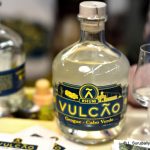 Cabo Verde – Vulcao Grogue White (45%). Based on its back-country pot-still antecedents, I was expecting something much more feral and raw and in-your-face than this ended up being. But it was lovely – gentle at the strength, packed with tasty notes of fruit, sugar water, brine and mint, channelling a delicious if off-beat agricole rhum and a character all its own. I’d drink it neat any day of the week, There are others in the range, but this one remains my favourite
Cabo Verde – Vulcao Grogue White (45%). Based on its back-country pot-still antecedents, I was expecting something much more feral and raw and in-your-face than this ended up being. But it was lovely – gentle at the strength, packed with tasty notes of fruit, sugar water, brine and mint, channelling a delicious if off-beat agricole rhum and a character all its own. I’d drink it neat any day of the week, There are others in the range, but this one remains my favourite
 Haiti-Italy – Clairin Le Rocher (2017)(46.5%). For my money, the Le Rocher is the most approachable clairin of the four issued / distributed by Velier to date, the most tamed, the richest in depth of taste – and that’s even with the mounds of plastic that open the show. These develop into a glorious melange of fruits and veggies and herbs and citrus that’s a testament to Bethel Romelus’s deft use of syrup and a variation of dunder pits to get things moving.
Haiti-Italy – Clairin Le Rocher (2017)(46.5%). For my money, the Le Rocher is the most approachable clairin of the four issued / distributed by Velier to date, the most tamed, the richest in depth of taste – and that’s even with the mounds of plastic that open the show. These develop into a glorious melange of fruits and veggies and herbs and citrus that’s a testament to Bethel Romelus’s deft use of syrup and a variation of dunder pits to get things moving.
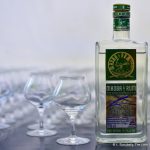 South Africa – Mhoba White Rum (58%). There’s an upswell of interest in making rums in Africa, and one of South Africa’s newbies is Mhoba. Again we have an entrepreneur – Robert Greaves – practically self-building a micro-distillery, using a pot still and the results are excellent, not least because he’s gone straight to full proof without mucking about at 40%. Tart, fruity, acidic, hot, spicy, creamy, citrus-y….it’s an amazing initial effort, well worth seeking out.
South Africa – Mhoba White Rum (58%). There’s an upswell of interest in making rums in Africa, and one of South Africa’s newbies is Mhoba. Again we have an entrepreneur – Robert Greaves – practically self-building a micro-distillery, using a pot still and the results are excellent, not least because he’s gone straight to full proof without mucking about at 40%. Tart, fruity, acidic, hot, spicy, creamy, citrus-y….it’s an amazing initial effort, well worth seeking out.
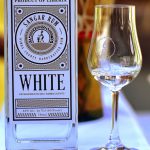 Liberia – Sangar White (40%). Staying with Africa we have another pot still white rum contrastingly released at living room strength (because its initial prime market will be the US) and that succeeds well in spite of that limitation. It’s light, it’s tasty, and snorts and prances like a racehorse being held on a tight rein, and shows off brine, wax, olives, flowers and a nice smorgasbord of lighter fruits which harmonize well. A really good sipping drink, with just enough originality to make it stand out
Liberia – Sangar White (40%). Staying with Africa we have another pot still white rum contrastingly released at living room strength (because its initial prime market will be the US) and that succeeds well in spite of that limitation. It’s light, it’s tasty, and snorts and prances like a racehorse being held on a tight rein, and shows off brine, wax, olives, flowers and a nice smorgasbord of lighter fruits which harmonize well. A really good sipping drink, with just enough originality to make it stand out
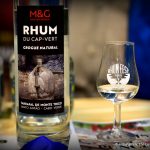 Cabo Verde – Musica e Grogue White (44%). Clearly we have some Renaissance men making rum over on Cabo Verde, because not only are Jean-Pierre Engelbach and Simão Évora music lovers, but their careers and life-stories would fill a book. Plus, they make a really good white grogue in the same area as the Vulcao (above), crisp and yet gentle, firm and clear, with flowers, fruits and citrus coming together in a pleasant zen harmony.
Cabo Verde – Musica e Grogue White (44%). Clearly we have some Renaissance men making rum over on Cabo Verde, because not only are Jean-Pierre Engelbach and Simão Évora music lovers, but their careers and life-stories would fill a book. Plus, they make a really good white grogue in the same area as the Vulcao (above), crisp and yet gentle, firm and clear, with flowers, fruits and citrus coming together in a pleasant zen harmony.
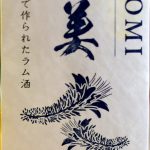 Japan – Helios “Kiyomi” White Rum (40%). Nine Leaves makes what I suggest might the best white rums in Nippon, but other locals have been there longer, and some are starting to snap at its heels. Helios tried hard with this relatively tasty and intriguing white, with a 30 day fermentation period and column still output dialled down to 40% – and it certainly had some interesting, strong aromas and tastes (wet soot, iodine, brine, olives, light fruits and spices etc) even if it failed to impress overall. If they decided to up the strength and switch the source to their pot still, I think they have a shot at the brass ring – for now, it’s more an example of a “what-might-have-been” rum with some interesting stylistic touches than a really amazing product.
Japan – Helios “Kiyomi” White Rum (40%). Nine Leaves makes what I suggest might the best white rums in Nippon, but other locals have been there longer, and some are starting to snap at its heels. Helios tried hard with this relatively tasty and intriguing white, with a 30 day fermentation period and column still output dialled down to 40% – and it certainly had some interesting, strong aromas and tastes (wet soot, iodine, brine, olives, light fruits and spices etc) even if it failed to impress overall. If they decided to up the strength and switch the source to their pot still, I think they have a shot at the brass ring – for now, it’s more an example of a “what-might-have-been” rum with some interesting stylistic touches than a really amazing product.
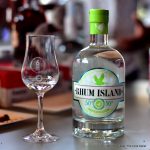 French Antilles – Rhum Island “Agricultural” (50%). This rhum is peculiar in that it is a blend, not the product of a single distillery – the source is from various (unnamed) distilleries in the French West Indies (its brother the “Red Cane” 53% is also along that vein, except it comes from distilleries in Guadeloupe and Marie Galante only). That makes it unique on this list, but one cannot fault the crisp, apple-like freshness of its taste, the way the creaminess of a tart fruit melds with the light zest of citrus and sour cream. Both this and the Red Cane are excellent, this one gets my vote by a whisker.
French Antilles – Rhum Island “Agricultural” (50%). This rhum is peculiar in that it is a blend, not the product of a single distillery – the source is from various (unnamed) distilleries in the French West Indies (its brother the “Red Cane” 53% is also along that vein, except it comes from distilleries in Guadeloupe and Marie Galante only). That makes it unique on this list, but one cannot fault the crisp, apple-like freshness of its taste, the way the creaminess of a tart fruit melds with the light zest of citrus and sour cream. Both this and the Red Cane are excellent, this one gets my vote by a whisker.
 Viet Nam – Sampan White Overproof (54%). Much like Sangar and Issan and Mhoba above, one guy – a Fabio-channelling Frenchman named Antoine Pourcuitte – created a small distillery from scratch and is happily releasing three variations of this rum, all white, at 45%, 54% and 65%. I only got to try the middle bear, and it blew my ears back handily – those earthy, briny, fruity aromas and the crisp snap of its tastes – olives, lemons, green apples, licorice and more – are really quite delicious. It marries “the freshness of an agricole with the slight complexity of an entry level vieux,” I wrote, and it’s good for any purpose you put it to.
Viet Nam – Sampan White Overproof (54%). Much like Sangar and Issan and Mhoba above, one guy – a Fabio-channelling Frenchman named Antoine Pourcuitte – created a small distillery from scratch and is happily releasing three variations of this rum, all white, at 45%, 54% and 65%. I only got to try the middle bear, and it blew my ears back handily – those earthy, briny, fruity aromas and the crisp snap of its tastes – olives, lemons, green apples, licorice and more – are really quite delicious. It marries “the freshness of an agricole with the slight complexity of an entry level vieux,” I wrote, and it’s good for any purpose you put it to.
 Laos – Laodi Sugar Cane White Rhum (56%). A wonderful, massive delivery system for some serious juice-distilled joy. Salty, dusty, herbal, earthy and lemony smells, followed on by classic agricole-type clean grassiness and herbs, wrapped up in a creamy package that deliver some serious oomph. An enormously pleasing evolution from the same company’s original 56% Vientiane Agricole. I have no idea what else they make, just know that I want to find out.
Laos – Laodi Sugar Cane White Rhum (56%). A wonderful, massive delivery system for some serious juice-distilled joy. Salty, dusty, herbal, earthy and lemony smells, followed on by classic agricole-type clean grassiness and herbs, wrapped up in a creamy package that deliver some serious oomph. An enormously pleasing evolution from the same company’s original 56% Vientiane Agricole. I have no idea what else they make, just know that I want to find out.
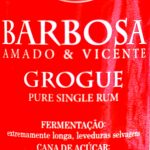 Cabo Verde – Barbosa Grogue Pure Single Rum (45%). Given Velier’s footprint in the world of Haitian clairins, it’s a surprise they only have one grogue, and even that has hardly had any of the heavy-hitting marketing that characterized the launch and subsequent distribution of the Sajous, Casimir, Vaval and Le Rocher. It would be a mistake to exclude it from consideration, however. It has a bright and clean fruity nose, very refined, almost gentle (something like a Saint James rhum, I remember thinking). The taste is crisper on the fruits, has some cold vegetable salad, a olive or two, green apples and lemongrass, and overall it’s a very easily sippable spirit.
Cabo Verde – Barbosa Grogue Pure Single Rum (45%). Given Velier’s footprint in the world of Haitian clairins, it’s a surprise they only have one grogue, and even that has hardly had any of the heavy-hitting marketing that characterized the launch and subsequent distribution of the Sajous, Casimir, Vaval and Le Rocher. It would be a mistake to exclude it from consideration, however. It has a bright and clean fruity nose, very refined, almost gentle (something like a Saint James rhum, I remember thinking). The taste is crisper on the fruits, has some cold vegetable salad, a olive or two, green apples and lemongrass, and overall it’s a very easily sippable spirit.
Well, there we go: another 21 rums, all white, cane juice or cane syrup or molasses, which are worth a look if they ever cross your path.
One thing that stands out with these rums is what a wide geographical range they cover – look at all those countries and islands they showcase, from Asia, Africa, the Caribbean (and this was after I excluded rums from the Pacific, the USA and Europe). No other spirit has ever had this kind of diversity, this kind of spread, with a profile for any taste, for any purpose.
Note also how, gradually, increasingly, pot stills are being represented – batch production is seen as inherently inefficient compared to the sheer volume a well-tended column still can generate, but the depth of flavour the former imbues its products, as well as gradually increasing efficiencies technological innovation provides.
It’s also nice to see how full proof rums are taking center stage – many now take this to be a given and have grown up cutting their teeth on such powerful products, but I still recall when 40% was all you got and you had to pretend to be grateful: North Americans in particular still have far too much of that kind low-rent crowd-pleasing crap crowding out good stuff on their shelves.
A note should be spared for grogues. The few that I’ve tried have been shown to be – for want of a better term – “not clairins”. They inhabit the space in between the fierce and uncompromising nature of the Haitian rhums, and the softer and more accessible Guadeloupe ones, while not being quite as clearly refined as those from Martinique. That’s not to say I can always pick ‘em out of a blind test, or that they are somehow less (or more) than any other white rum…just that they are resolutely themselves and should be judged as such.
Asia, to my delight, keeps on throwing up new and interesting rums every year – some from new micro-distilleries, some by larger operations, but almost all of it is moving away from their softer and sweeter styles so beloved of tourists and backpacking boozers. I have yet to seriously attack Australia; and SE Asia and Micronesia continue to develop, so if I ever put out a third list, no doubt such regions will be better represented on the next go-around.
With respect to the rums here, my purpose is not to rate them in some kind of ascending or descending order, or to make a choice as to which is “best” – whatever that might mean. I just would like to make you aware, or remind you, that they exist. The other day, a post on reddit asked about smooth agricole rhums. I read it and didn’t comment, but what the responses make clear is how many different white rums and rhums exist, and how many of them are — in people’s minds — associated with the Caribbean. I hope this second list of mine shows that there is much enjoyment to be had in sampling white rums from around the globe, no matter where you are, and that the future for the subcategory remains a vibrant and exciting one to be a part of as it unfolds.
Note: Would you believe it, the niche expanded sufficiently to add yet another 21 in 2022.
The Plantation Three Stars White Rum should be in this group. Others may or may not agree, but it is outstanding. One of the few white rums I have found worth consuming straight or as a mix. I don’t consume mixed drinks, but the Plantation White, “fresh” squeezed pink grapefruit juice and fresh mint over the rocks is an outstanding, if not addictive, summer drink.
Two cents from Chicago-land
I have not forgotten your comment on the Boutique-y O Reizinho thread, Phil, but the sample that was supposed to have come my way last month went awry and now I have to re-source it. But I mean to try the thing, never fear.